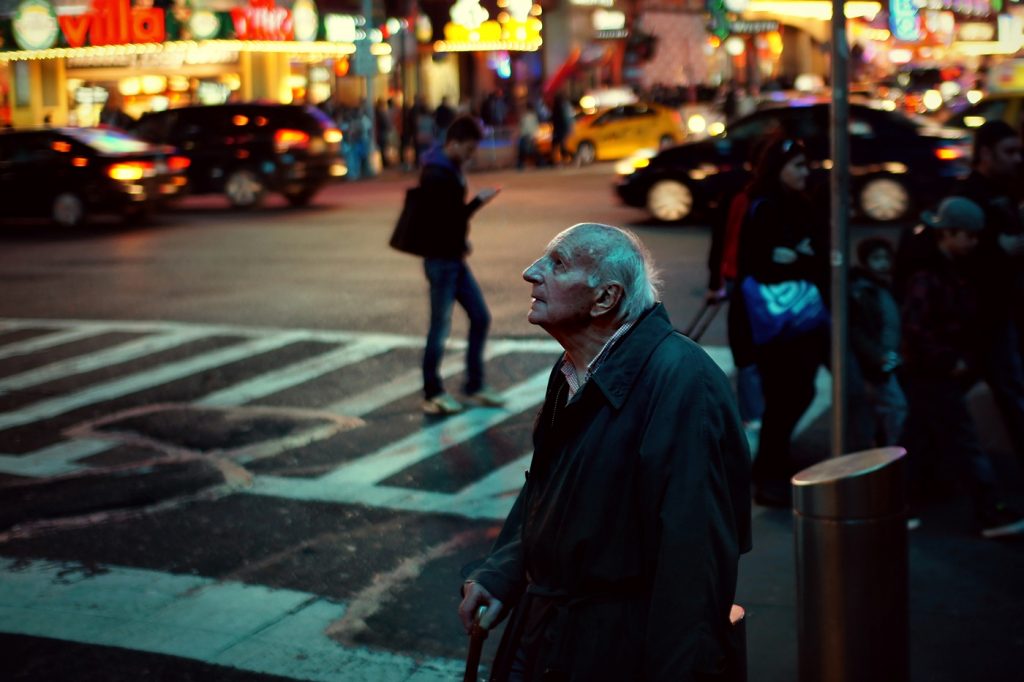
People often tend to categorize the work of photographers, there are “street photographers”, “fashion photographers”, “architecture photographers”. I’m not sure what I am. Sometimes I call myself an urban photographer, but that’s not really a genre, it’s just saying, that most of my photography is made in cities. My photography is a game, or a role play, somewhere placed between arts and reality – with an artwork that ideally lures the viewer into a realm of untold stories. And what the viewer might discover by entering this realm, is a little bit about people and their relationships to each other, a little bit about arts and perception, a little bit about the world and how we see the world – but foremost I hope that the viewer learns a lot about himself and about his own relation to the world, and about his own perception of the world. I see the viewer as the defining, the crucial element of arts. It’s the viewer with all his experiences, all his subjectivity that perceives my work of art, no one else. The artist alone is no one. The artwork begins to exist in the recipient.
I’m somehow influenced by the classic French and American street photographers, such as Cartier-Bresson, Kertesz, Winogrand, Erwitt and Friedlander, although I usually do not call myself a street photographer. And so I think that the biggest influence does not come from those street photographers but from the American color photographers mainly from the fifties and sixties, names as Joel Meyerowitz, William Eggleston, Louis Faurer and Saul Leiter. Many of my photographs are in color and it’s mainly the work of Leiter that told me a lot about composing pictures with colors, and with a big variety of unusual perspectives. And it’s Leiter’s work with unsharpness, his work with bokeh and his unusual choices of where to put the focal point that influenced my way of looking at photographs.
But if I had to name an artist that influenced my photography most I would surprisingly name a writer: Franz Kafka. It’s his dark sense of humour, his mysterious way of telling absurd stories that I’m feeling to be very close to with my narrative photography. Kafka’s stories, my favourite one is ‘The Trial’, always live from the gaps, from the unanswered questions, the unsolved, unsolvable riddles. Someone once said that photography is like painting with light. I do not agree with that. For me it’s the absence of light – darkness and shadows – and the absence of explanations, solutions, that creates the narrativity of my photographs. It’s the tendency of the viewer to fill in those gaps, to solve those riddles, to answer those questions that is starting the stories, in the fantasy and in the imagination of the viewer.
Jürgen Bürgin (2014)